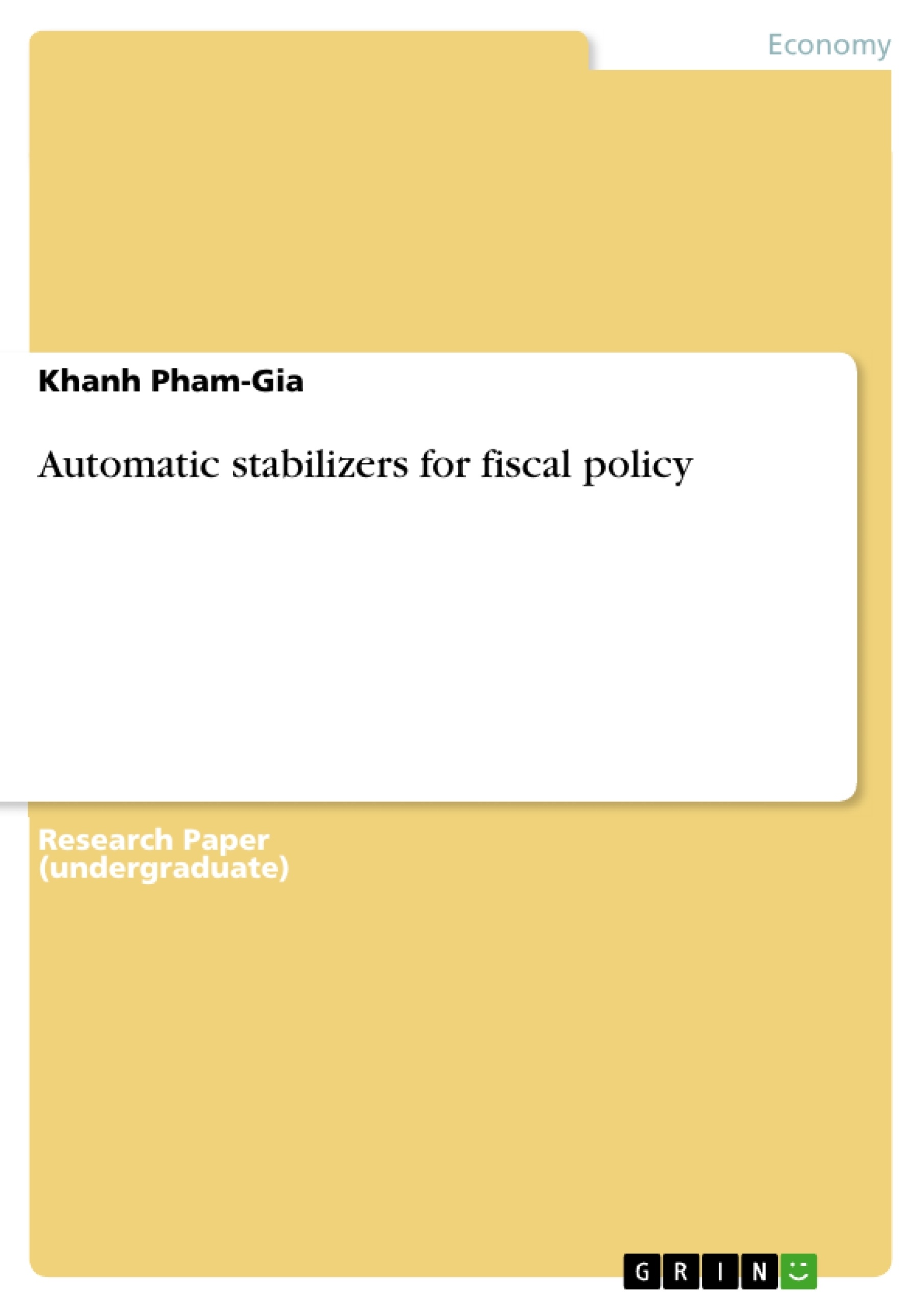The object of this study is to analyze the influence of fiscal policy, in particular of the public expenditure, on the stabilization of business cycle. Moreover, the functional principle of automatic stabilizers and the impact of fiscal stabilizers on businesses are studied.
The condition for a steady economic development is achievement of stability targets like full employment of production factors, monetary stability, balancing of payment as well as equilibrium of foreign trade. To counteract the economic fluctuations government can apply two stability tools: the fiscal and the monetary policy. These both policies affect the aggregate demand and contribute to stabilize short-run economic fluctuations.
The principle of the fiscal policy is an adjustment of public expenditure and public revenue (taxes) in according to the economic situation. A higher public expenditure leads to an increasing of the aggregate demand. The total change in GDP is depending on two opposite macroeconomic effects: the multiplier and the crowding-out effect. The multiplier effect results, that the total change in demand as well as in GDP can be a multiple of the initial public expenditure. Contrary, the crowding-out effect leads to a reduced aggregate demand due to the aligned increasing of interest rate. The impact of public expenditure on GDP depends on whether the multiplier effect or the crowding-out effect is stronger.
An opportunity to avoid problems of lags in implementation by using of the fiscal policy is automatic stabilizers, e.g. tax system and government spending. They enable an automatic adjustment of the aggregate demand without additional actions or interventions of policymakers. The fiscal stabilizers have a positive impact on various businesses, but with different degrees.
It could be summarized, that the fiscal policy affects both the aggregate demand and the aggregate supply. By means of fiscal stabilizers economic fluctuations could be smoothen.
Inhaltsverzeichnis
- Executive Summary
- Table of Contents
- List of Abbreviations
- List of Figures
- 1 Introduction
- 2 Main Part
- 2.1 Government's policies for stabilization of economic cycle
- 2.2 The influence of public expenditure on GDP
- 2.2.1 The multiplier effect
- 2.2.2 The crowding-out effect
- 2.3 Automatic stabilizers
- 2.4 Impact of the fiscal stabilizers on businesses
- 3 Conclusion
- 4 ITM Checklist
Zielsetzung und Themenschwerpunkte
This study aims to analyze the impact of fiscal policy, particularly public expenditure, on stabilizing the business cycle. It explores the functional principle of automatic stabilizers and their influence on businesses. The study focuses on the role of fiscal policy in achieving economic stability, including full employment, monetary stability, balanced payments, and foreign trade equilibrium.
- The influence of fiscal policy on economic stabilization
- The role of automatic stabilizers in fiscal policy
- The impact of fiscal stabilizers on businesses
- The multiplier and crowding-out effects of public expenditure
- The effectiveness of fiscal policy in mitigating economic fluctuations
Zusammenfassung der Kapitel
The study begins by introducing the concept of economic stabilization and the role of fiscal policy in achieving this goal. It then delves into the influence of public expenditure on GDP, examining the multiplier and crowding-out effects. The study highlights the importance of automatic stabilizers, such as tax systems and government spending, in automatically adjusting aggregate demand without requiring additional policy interventions. It concludes by analyzing the impact of fiscal stabilizers on various businesses, demonstrating their positive influence on economic stability.
Schlüsselwörter
The key terms and focus themes of the text include fiscal policy, automatic stabilizers, public expenditure, GDP, multiplier effect, crowding-out effect, economic stabilization, business cycle, and the impact of fiscal stabilizers on businesses. The study explores the effectiveness of fiscal policy in mitigating economic fluctuations and the role of automatic stabilizers in achieving economic stability.
- Citar trabajo
- Dr. Khanh Pham-Gia (Autor), 2008, Automatic stabilizers for fiscal policy, Múnich, GRIN Verlag, https://www.grin.com/document/132244
-

-

-

-
¡Carge sus propios textos! Gane dinero y un iPhone X. -

-
¡Carge sus propios textos! Gane dinero y un iPhone X. -

-
¡Carge sus propios textos! Gane dinero y un iPhone X. -

-
¡Carge sus propios textos! Gane dinero y un iPhone X. -

-
¡Carge sus propios textos! Gane dinero y un iPhone X. -

-
¡Carge sus propios textos! Gane dinero y un iPhone X. -

-
¡Carge sus propios textos! Gane dinero y un iPhone X.

